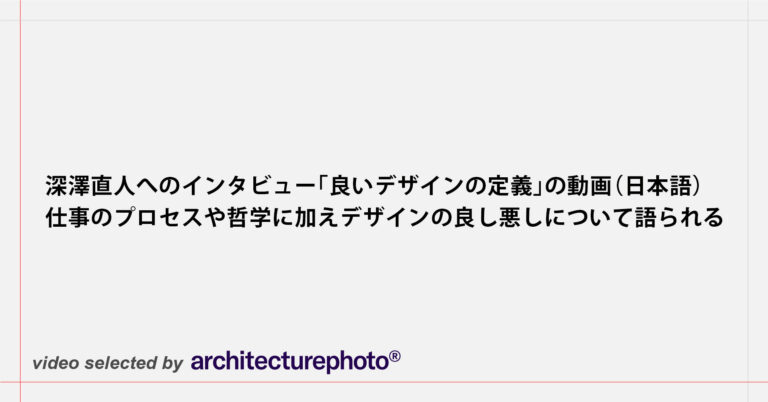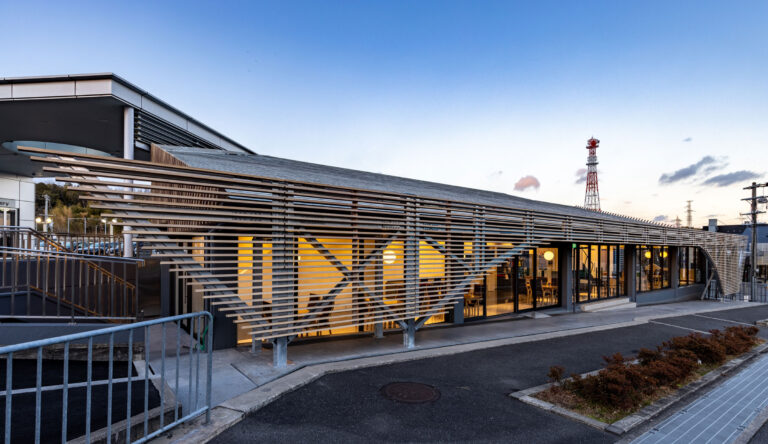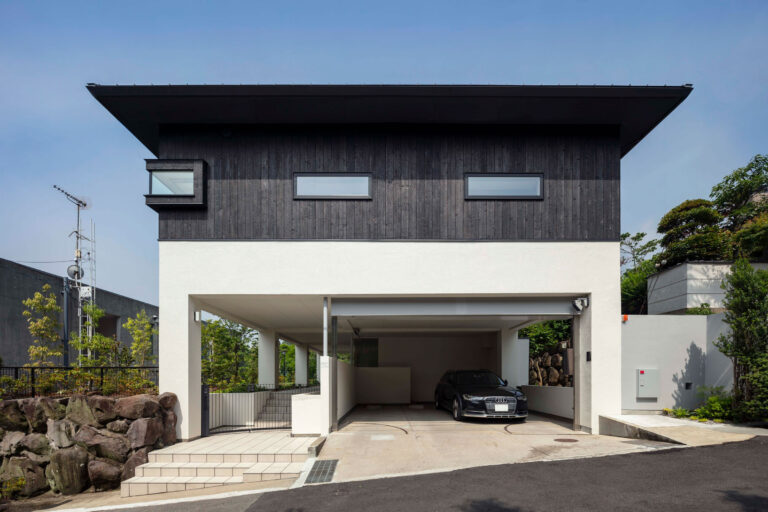深澤直人へのインタビュー「良いデザインの定義」の動画です。ルイジアナ美術館が制作公開するシリーズの一環で、日本語で視聴可能です。
(翻訳)
「人と物、あるいは環境との関係性を引き受け、また光を当て、適切かつ最適な解決策を見出すことが私の仕事です」日本のデザインのパイオニアである深澤直人が、仕事のプロセスや哲学、デザインの良し悪しについての考えを語ります。もちろん、深澤直人は子どもの頃から絵を描いていました。しかし、電気技師の父のもとで育った彼は、常にさまざまな道具に囲まれ、絵だけでない創造の世界を広げてきました。そして、進路を決めるとき、深澤はプロダクトデザイナーになることを決意します。「最初の10~15年は、良い形、美しい形をつくることが自分の仕事だと思っていました」「デザインは、人の好みで変わるものだと言われました。私はそう思っていません」と深澤は言い、詳しく説明します。「人の意見やセンスを聞くより、静かに観察している方がいい。きっと、すべての人に気に入ってもらえるものがあるはずです。それを普遍的と言えるかどうかはわかりません。でも、私は敢えてその直感を使って、形を与えようと思っています。黙って見せようとすることが、デザインの本質なんです」
ミニマリスティックな美学で知られる深澤は、日本を代表するライフスタイルショップ「無印良品」をはじめ、名だたる企業のプロダクトをデザインしてきました。深澤は、デザインにおけるシンプルさについて、「シンプルとは、単に形の問題ではなく、調和の問題です」と語っています。彼にとって、最高のデザインのプロダクトは、必ずしも目立つ必要はありません。「必要なときに、迷惑をかけずそこにいてくれればいいのです。静かにしていることが一番の愛情表現なのです」それをデザインで達成するために、深澤は同じ方法を用います。「人やその周り、空間、モノを観察することは、私の自然な習慣になっています」
「デザイナーがエンジニアと一緒に構造を考えると、実はこの『デザイン思考』がやりやすいんです」深澤直人のデザインプロセスで欠かせないのが、熟練した職人や技術者とのコラボレーションです。「インダストリアルデザイナーとして、デザインから工場までの工業生産プロセス全体の知識は非常に重要です」と言い、こう続けます。「デザインとは、皆が好むものを感じ取り、理解する力を持つこと。そして、それを職人や技術者に理解させること。ただ感じるだけではダメなんです。それをどう実現するかということも、デザイナーは正確に知っていなければならなりません」
(原文)
”To take the relation between people and things or the environment and shed light on it to find suitable and optimal solutions is my job.” Japanese design pioneer, Naoto Fukasawa, shares his work process, philosophies, and thoughts on good and bad design.Of course, Naoto Fukasawa drew as a child. But growing up with a father who was an electrician, he was also constantly surrounded by different tools that opened a world to create that went beyond drawings. When the time came to choose what to study, Fukasawa decided to become a product designer. “The first ten to fifteen years, I thought that the making of good forms or beautiful forms was my job,” he explains. “I was told that designs differ according to peoples’ taste. I don’t think so,” Fukasawa says and elaborates: “Instead of asking the opinion or sense of people, it’s better to be quiet and observe. I am sure that there are things that all people will like. I don’t know if you could call it universal. But I deliberately use this intuition and try to give it a form. To keep quiet and try to show is the essence of design.”
Known for his minimalistic aesthetics, Fukasawa has designed products for several respected companies, including the iconic Japanese lifestyle store, MUJI. When talking about simplicity in design Naoto Fukasawa says: “Simple is not just a question of form, but also of harmony.” To him, the best-designed products needn’t necessarily be noticeable: “They just have to be there when you need them, without causing trouble. They show their love best by being quiet.” To achieve this in his design, Fukasawa uses the same method: “To observe people, their surroundings, space, and things have become a natural habit of mine.”
“If a designer thinks about structure together with an engineer, it’s actually easier to do this ‘design thinking’.” An essential part of Naoto Fukasawa’s design process lies within his collaboration with skilled craftsmen and engineers: “As an industrial designer, the knowledge of the whole industrial production process from design to the factory is very important,” he says and continues: “Design is to have the power to feel and understand what everybody will like. And make sure this is understood by the craftsmen or the engineers. It’s not just something you should feel. The designer should also know precisely how to realize it.”





